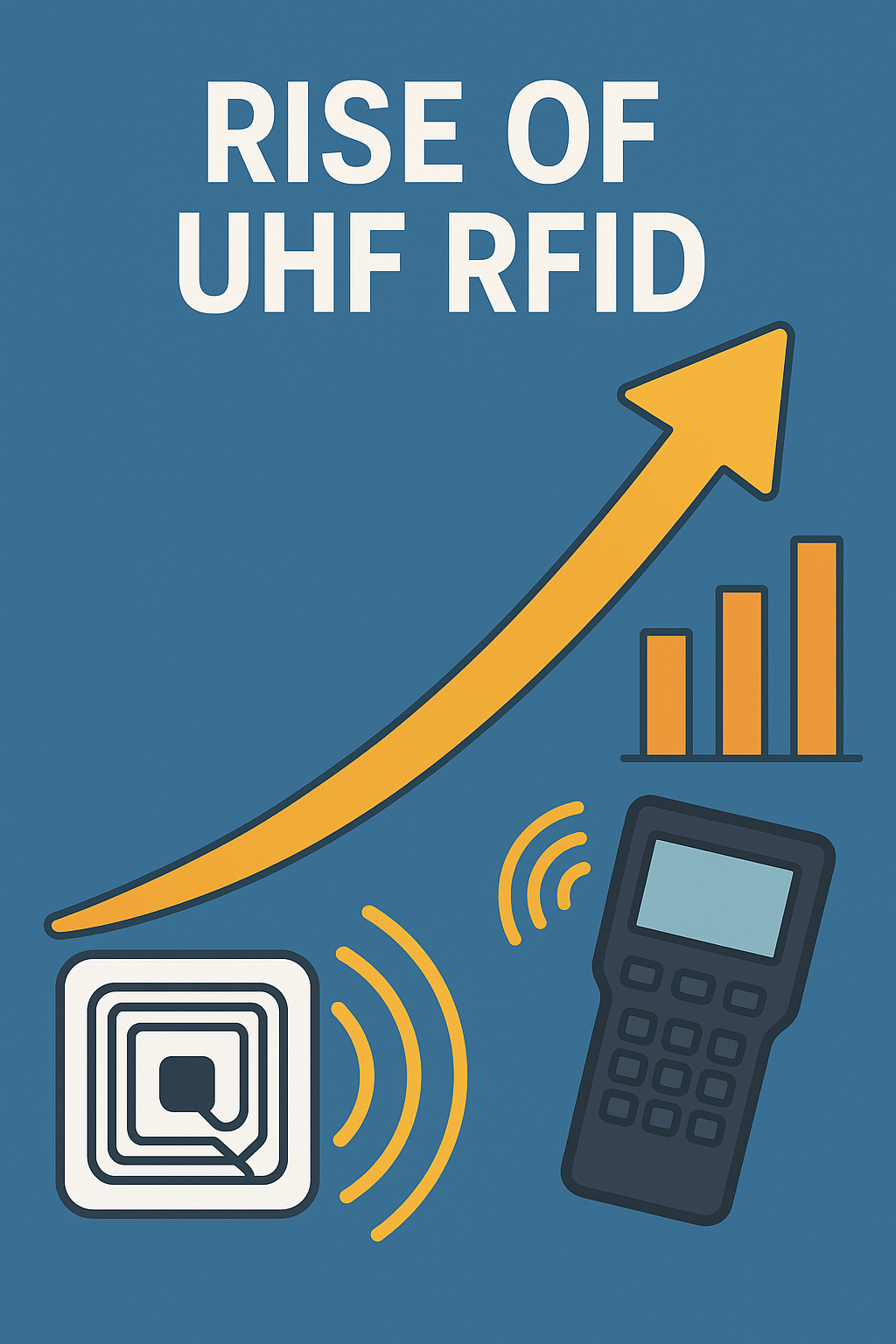In the world of RFID technology, one term that’s being heard more and more often is UHF RFID or Ultra High Frequency RFID. Whether it’s retail stores, libraries, logistics companies, or manufacturing plants, everyone seems to be upgrading to UHF based systems.
But what exactly makes UHF RFID so special? Why has it become the preferred choice for so many applications? Let’s understand this in a simple and detailed way.
Understanding RFID and Its Frequency Bands :
RFID is a technology that uses radio waves to identify, track, and manage tagged objects. Every RFID system mainly consists of three parts a tag, a reader, and a software system that processes the data.
Now, RFID doesn’t work at just one frequency. It’s divided into three major ranges:
Low Frequency (LF) – Works around 125–134 kHz
High Frequency (HF) – Works around 13.56 MHz
Ultra High Frequency (UHF) – Works between 860–960 MHz
Each of these bands has its own advantages and limitations. LF and HF systems are often used for short range identification (like access cards or animal tracking), whereas UHF systems are built for speed, longer range, and high volume tracking which makes them stand out today.
The Growing Popularity of UHF RFID :
Industries like retail, logistics, libraries, healthcare, manufacturing, and even education are increasingly adopting it. The reason is simple: UHF RFID can capture hundreds of tags in seconds, even from several meters away something earlier generations of RFID couldn’t do efficiently.
Let’s explore the reasons behind this rise in more detail.

-
Longer Read Range :
The biggest advantage of UHF RFID is its extended read range. Depending on the power and environment, UHF readers can detect tags from 5 to 12 meters away ,sometimes even more with specialized antennas.
This makes it ideal for large scale environments such as Warehouse and logistics centers , Library shelf tracking , Retail inventory audits, Vehicle access and parking systems
With longer read ranges, users no longer need to manually scan each item or stand close to a reader. A single UHF reader can cover a wide zone, making processes faster and convenient. -
Faster Data Capture :
UHF RFID systems can read , a feature known as anti-collision capability. This means even if 100 tagged books or products are placed close together, the reader can detect each one individually in just a second.
This speed is helping industries that handle large volumes of tagged items daily. For example:
In libraries, staff can perform shelf inventory in minutes using a handheld UHF reader.
In warehouses, UHF portals can automatically record goods as they move in or out.
In retail, store employees can quickly check stock levels without manually scanning every product.
Such speed directly leads to improved productivity . -
Cost Effective and Scalable :
Earlier, UHF RFID tags used to be expensive. But thanks to technological progress and large-scale production, the cost has come down drastically in recent years.
Today, UHF tags are among the most affordable RFID tags available, especially in bulk quantities. This cost effectiveness allows businesses and institutions to scale up easily , tagging more assets without worrying about high expenses. -
Wide Compatibility and Standardization :
UHF RFID follows global standards such as EPC Gen2 (ISO 18000-6C). This means tags and readers from different manufacturers are usually compatible with each other.
This standardization ensures Easier integration with existing systems , Freedom to choose from multiple vendors , Reliable performance across regions.
As a result, organizations can upgrade or expand their RFID setup in the future without worrying about brand lock in or compatibility issues. -
Supports Harsh Environments :
UHF RFID systems are also designed to perform reliably even in challenging conditions such as dusty warehouses, outdoor parking areas, or metal rich environments.
Modern UHF tags are available in specialized forms like on metal tags, rugged industrial tags, and flexible label tags. These can withstand heat, moisture, vibration, and rough handling.
This versatility makes UHF RFID suitable for almost any environment, from library shelves to shipping yards. -
Integrates Easily with IoT and Software Systems :
Today’s digital infrastructure demands connectivity and UHF RFID fits right in. It can easily be integrated with:
- IoT dashboards
- Cloud based inventory systems
- ERP and asset management platforms
- Mobile apps and analytics tools
This integration allows organizations to monitor assets remotely, generate reports, and even receive alerts when something moves unexpectedly. UHF RFID provides the bridge between physical assets and digital intelligence. -
Ideal for Both Fixed and Mobile Applications :
UHF RFID is highly flexible. It can be deployed as:
Fixed reader systems – for continuous, automated monitoring (like entry gates or conveyor systems).
Handheld readers – for mobile scanning, audits, and fieldwork.
This dual usability makes it practical for a wide range of applications from smart libraries and production units to event management and logistics. -
Constant Technological Advancements :
Another reason for UHF RFID’s growing dominance is continuous innovation. Antenna designs, chip sensitivity, and reader technology are all improving every year.
Recent trends include :
Printed UHF antennas that are ultra thin and eco friendly
Solar powered RFID tags for sustainable tracking
AI based analytics that process RFID data intelligently
Battery assisted UHF tags that further extend read range
These advancements keep pushing UHF RFID ahead of other frequency types, ensuring it remains future ready.
Common Uses of UHF RFID Today :
- Libraries: Book tracking, self checkout kiosks, and inventory management
- Retail: Stock control, anti theft systems, and supply chain visibility
- Healthcare: Equipment tracking and patient identification
- Logistics: Shipment tracking and yard management
- Manufacturing: Asset monitoring and production flow control
- Access Control: Vehicle and personnel entry systems
Conclusion :
The rise of UHF RFID is the result of consistent innovation and proven real world performance.<br><br>
Its longer range, faster data capture, affordability, and ability to integrate with modern digital systems have made it the preferred choice across sectors. Whether in a library, a warehouse, or a parking gate, UHF RFID is helping people save time, reduce manual work, and improve accuracy like never before.

